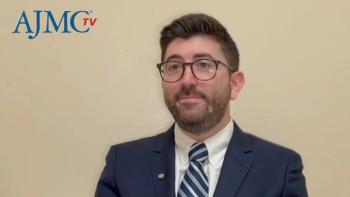
Culturally Competent Menopause Care: Lisa Taylor-Swanson, PhD
Lisa Taylor-Swanson, PhD, explains how including Indigenous and Hispanic women in conversations around menopause care helps fine-tune interventions.
How do clinicians balance evidence-based practices with culturally relevant care?
Lisa J. Taylor-Swanson, PhD, LAc, Dipl OM (NCCAOM), associate professor at the University of Utah College of Nursing, answered this question at
Indigenous and Hispanic
This transcript has been lightly edited; captions were auto-generated.
Transcript
How do cultural values and/or traditional practices shape the way Indigenous and Hispanic women understand, experience, and manage menopause?
We've had the good fortune, my colleagues and I, of working with midlife women as community advisory board members, so they're literally collaborators in the research enterprise. Speaking first regarding Indigenous women—and I should mention, it's not like 2 silos. There are plenty of Hispanic-Indigenous women, but just for semantics I'm describing groups separately. But working with our community advisory board group with Indigenous women, they said things like, "Yeah, we really are interested in natural medicine," so integrative health therapeutics. Herbal medicine, acupressure, acupuncture, massage therapy, mindfulness—the whole integrative health suite, you might say, of options were really of keen interest.
Indigenous women talked about, "We use natural medicine. That's what my mother used, my grandmother—our communities for millennia, we've used natural medicine. That's what was always done." And so what we've done is—I think it's the best of all the worlds, you might say, it's more than just both—looked at what's the evidence base, what's the safety record, critically, for each intervention, most especially in terms of herbal medicine to make sure there's not liver toxicity or something else. But where there's an evidence base of safety and then, better yet, an evidence base of efficacy, that's what we've included in our intervention as guided by Indigenous women.
We just recently received a grant from NIH and are really excited to move this work forward, which will be a feasibility and acceptability study, again, among Indigenous women for this intervention that contains both conventional and integrative care. We took experts, midlife women, and took them at their word and really designed an intervention that delivered what they were interested in, which was, again, access to both integrative and conventional care.
Furthermore, it's delivered at a local Indian walk-in center that's a known community and known community resource, not only for clinical care, but for powwows and for back-to-school fairs, and so it's a from within the community, for the community, and in the community type of intervention.
Likewise, in working with Hispanic women,
And there's very much a positive psychology message as well: how can women go through this chrysalis of a time of transformation and emerge a butterfly? How can they be their best self in their work life, in their home life, their family, and community roles, really coming into this place of strength? That's what we're aiming for with this intervention in addition to symptom management and health promotion.
In talking about that positive psychology message in the original intervention that was designed for everyone, for all women, there was some verbiage about like, "Let's go ice skating or go do fun things," and my Hispanic colleague said, "In our community, we don't really go ice skating." So, it was important not only to translate but also, again, to make sure it was culturally relevant.
Likewise, with the Indigenous version, they named it Waning Moon. That model of the intervention is guided by and from and within Indigenous wisdom. One type of Indigenous wisdom is the medicine wheel. The medicine wheel configures a whole person in terms of body, mind, spirit, emotional health, and all those components are included in Waning Moon, because it's Indigenous wisdom that's driving the intervention along with midlife women's voices.
Newsletter
Stay ahead of policy, cost, and value—subscribe to AJMC for expert insights at the intersection of clinical care and health economics.












































